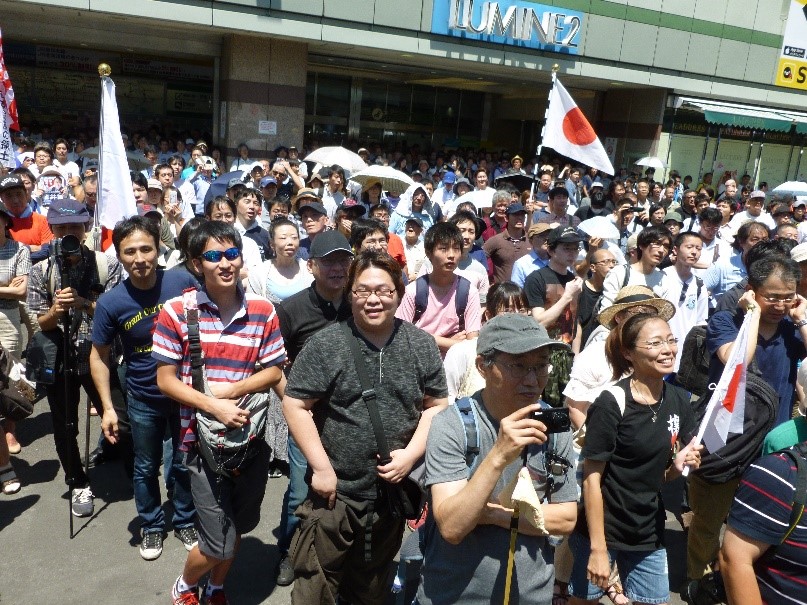Now, it is the turn of Japan, and history comes full circle. The country is fast catching the contagion of Far-Right ideology that is sweeping vast swathes of land in Europe and other continents. Pro-Nazi forces have emerged in Germany as the second largest outfit getting wide popular support. A pro-Fascist political party in Italy has already captured power. These two countries, along with Japan, known as the Axis powers, were primarily responsible for the hate politics that brought about the Second World War. In Japan, these forces were hardly visible till the outbreak of COVID-19 in 2020. But, now, tell-tale signs of a movement that draws its inspiration from anti-migrant and xenophobic ideas, such as US President Donald Trump’s clarion call of MAGA (Make America Great Again), are clearly visible with the Far Right party Sanseito winning 14 seats in the upper house recently. The numbers may not, on the surface, signify much since Japan’s upper house has a total of 248 members. But what is most disconcerting for liberal parties is that the Right-wing Populist Party is gaining national traction.
Just as Far-Right populist parties in Europe initially found success in modest and underestimated ways within select elections and regions, the Japanese version of such political forces shows how populism serves as a flexible political platform, as exemplified by San seito’s MAGA-inspired “Japanese First” politics. Sanseito’s platform focuses on three main issues: the perceived threats from “globalist” elites, an “uncontrollable” influx of allegedly criminal foreigners and a “corrupt” political establishment, burdening” young people with taxes. These narratives virtually replicate the themes of globalised populism, resembling the rhetoric of Germany’s Right-wing party leader Alice Weidel and others of that ilk. Like many populist agendas, these issues capture the imagination of people as the political parties raise them to leverage a sizable segment of the people’s resentment against migrants or corrupt elites. The goal is to “reclaim” the nation from these threats, no matter whether they are real or imaginary. Kamiya Sohei, Sanseito’s lead er, openly admits to borrowing this strategy from Trump and other Right-wing populists.
Experience from other countries where Right-wing populism has become entrenched shows how potent the ideology is. Even if such parties rise and fall or even disappear, the ideology often leaves its deep imprint on the minds of the people. The aim of the populist agenda is to completely change the political trajectory and introduce a new political narrative, manipulating the latest communication technology to undermine democratic institutions through strategic attacks. Their ultimate objective is not to promote a new ideology, but to deepen the people’s distrust in democratic norms and institutions. The intent is to cause long-term damage that cannot be easily reversed, even if the party loses influence or dissolves. In short, it can be said that such parties now are busy dismantling the democratic fibre across the globe. It is no mere coincidence that Kamiya has chosen social media to indoctrinate the people with his own political belief, the way the world’s richest man and owner of ‘X’ Elon Musk, is eliciting the people’s response to his grand plan of launching a political party. In 2013, Kamiya launched a YouTube channel called “ChGrandStrategy,” promoting Far-Right propaganda, historical revisionism, and conspiracy theories. As of June 2025, the channel boasts 338,000 subscribers and over 3,000 videos. This is far more than any other mainstream political party could do. It is important to note that most Right-wing populists know how to use social media.
Also Read: Rules Abandoned
Therefore, it is from these platforms that they have created their base, and these platforms are their constituencies. Both Musk and Kamiya seem to know their limitations and hence are not eyeing to chalk up a parliamentary or congressional majority. Their aim is to win a few seats and use them as bargaining chips for their political ambition. The surge in Sanseito’s popularity came against the backdrop of a his toric loss by the long-governing conservative coalition of Prime Minister Shigeru Ishiba, with Sanseito attracting frustrated voters struggling with economic woes. Kamiya has already ruled out allying with conventional parties like Ishiba’s Liberal Democratic Party, or LDP.
However, he is open to cooperating with other emerging parties. His ambition appears to have more influence in forming a multiparty coalition like those in Europe. Some see grave dangers in the emergence of such autocratic forces at the centre stage of world politics. This could be ominous for peace, order and growth.

